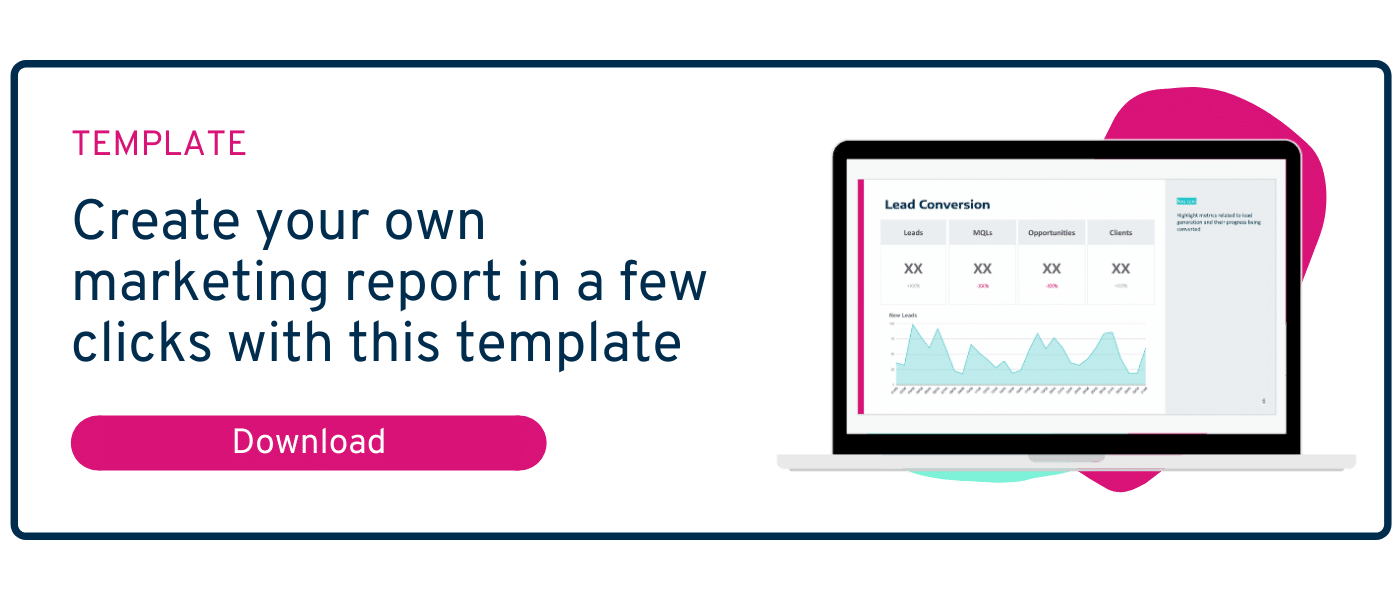Customer Lifetime Value (CLV) is something of a guiding light for marketers as they try and manage the costs of customer acquisition and retention. This key metric measures how much value a customer generates for a business, not just at the point of acquisition, but over the whole period of their relationship. It shows you what customer segments are the most profitable and how good your company’s customer experience is.
What is Customer Lifetime Value?
Customer Lifetime Value (CLV) is a measure of the average value generated by a customer over their entire relationship with a business, from their first purchase until the relationship ends.
This quantifiable metric that is measured over the long term will help you better manage your budgets for customer acquisition and retention and let you easily calculate the return on investment of each customer. By calculating the average length of a customer’s relationship with your business, the CLV will also give you an indication of how good your customer experience is.
Why is Customer Lifetime Value important?
The CLV typically shows the average sales revenue generated by a customer throughout their relationship. But you can also use it to show how much profit they generate.
The CLV basically shows you how much a customer is worth compared to how much you have spent to acquire and retain them. It goes hand in hand with two other important metrics for your strategy:
- Customer Acquisition Cost (CAC), or all the money you invest in acquiring a new customer
- Customer Retention Rate (CRR), or the percentage of customers that your business retains over a given period
How to calculate Customer Lifetime Value (CLV) in 4 steps
Before you get started, you need to decide on the specific time period to look at. This will serve as a basis for all your calculations. For example, this period that could be a year or 6 months.
1. Measure your Customer Retention Rate (CRR)
The customer retention rate is easy to calculate. It is the percentage of customers that you retain over the given period.
For example, out of 100 customers acquired this year, 80 have renewed their subscription for the following year. Your customer retention rate is therefore 80%.
The customer retention rate is the opposite of churn, or the percentage of customers who have stopped using your product or services over the given period.
2. Calculate the average lifespan of your customers
To measure Customer Lifetime Value, you need to first calculate the average period of time that a customer continues to use your product or services, also called the average customer lifespan:
Average customer lifespan = 1 / (1 – customer retention rate)
So, if your customer retention rate is 80% over a year, the average customer lifespan is:
1 / (1 – 0.8) = 1 / 0.2 = 5 years
This is the first step in measuring your CLV. This is quite a rough calculation. If your business has a significant existing customer base, use your own observations to calculate an average customer lifespan that is more realistic for your business.
3. Calculate average purchase value and average purchase frequency for your customers
These two pieces of data are an indication of the purchasing behaviour of your customers.
Average purchase value = sales revenue / number of purchases
Average purchase frequency = number of purchases / number of individual customers
4. Calculate your Customer Lifetime Value
Now you have everything you need to calculate your CLV.
The easiest way to measure your Customer Lifetime Value is to use the following formula:
CLV = (Average purchase value x Average purchase frequency) x Average customer lifespan
Using this calculation, your CLV is measured in terms of sales revenue and not profit. It doesn’t take into account the costs of customer acquisition and retention.
An example of calculating CLV for a B2B business
Let’s look at a B2B company that offers a cloud-based online management tool. The period that we will look at is one calendar year.
Sales revenue over this time is £950,000. The business has issued 1,900 invoices (number of purchases) and has 158 customers. Its customer retention rate is 80%.
- Average purchase value = 950,000 / 1,900 = £500 per purchase
- Average purchase frequency = 1,900 / 158 = 12 purchases over the year (e.g., a monthly subscription)
- Average customer lifespan = 1 / (1 – 0.8) = 5 years
- Customer Lifetime Value = (500 x 12) x 5 = £30,000
The CLV then tells us that each customer generates on average 30,000 pounds in sales revenue over the course of their relationship with the business.
How to get more out of your CLV
If you want to measure not just sales revenue for each customer but how profitable they are, your CLV can be adjusted to take into account the marketing costs associated with customer acquisition and retention. To do this, you need to calculate your Customer Acquisition Cost (CAC) and Customer Retention Cost.
Customer Acquisition Cost (CAC) = (Cost of marketing campaigns for prospecting + Cost of sales) / Number of new customers acquired with these activities
Customer Retention Cost = (Cost of customer loyalty programmes + Cost of customer experience) / Number of individual customers
By deducting the costs of customer acquisition and retention, your CLV will more accurately reflect the real value generated by each customer over their customer lifespan.
CLV = [ (Average purchase value x Average purchase frequency) x Average customer lifespan] – [ (Customer Acquisition Cost + Customer Retention Cost) x Average customer lifespan]
Looking again at the example above
The B2B business we looked at has spent £25,000 on customer acquisition over the year and £10,000 on improving the customer experience for existing customers (e.g., events, special offers, optimising its website, after-sales service). It has acquired 10 new customers and has 158 customers in total.
As we calculated above:
- Average purchase value = £500
- Average purchase frequency = 12 purchases over the year
- Average customer lifespan = 5 years
Calculating the additional information:
- Customer Acquisition Cost (CAC) = 25,000 / 10 = £2,500
- Customer Retention Cost = 10,000 / 158 = £63
- CLV = [ (500 x 12) x 5] – [(2,500 + 63) x 5] = 30,000 – 12,815 = £17,185
In this example, a customer generates an average of 30,000 pounds in sales revenue over their customer lifespan. But by taking into account the costs of marketing and sales, we can see that their real value to the business is £17,185.
How to use CLV
Your CLV is an important piece of information that will help you set budgets for marketing campaigns. For example, if your Customer Acquisition Cost is higher than your Customer Lifetime Value, your customers are obviously not profitable for you.
If you calculate the CLV of different customer segments, you will quickly be able to see which segments cost you the most money and which are the most profitable. This will then let you decide on which segments to prioritize and fine-tune your marketing budgets as a result.
How to improve your CLV
There are a number of ways that you can improve your CLV.
Encourage additional purchases without increasing your marketing budget
By improving your average purchase value or average purchase frequency, you can improve sales revenue without necessarily investing further in marketing. You can do this by selling complementary services, for example, or using cross-selling to reach other departments in the businesses of existing customers to increase their average purchase value.
Automate some marketing actions
You can also reduce your marketing budgets without affecting the average purchase value, average purchase frequency, and average customer lifespan. One way to do this is to automate the acquisition of customers in less profitable segments by using marketing automation software. Marketing automation also lets you personalize some of the interactions you have with customers on a large scale, providing them all with a unique customer experience.
Redefine your customer segments
Once you’ve identified those customers that have the best CLV (i.e., by business sector, how ready they are to buy), use a retargeting campaign to increase retention of priority customer segments.
Increase customer satisfaction to prolong their customer lifespan
By continuously improving your customer experience, you will ensure that your customers remain customers for longer and thus provide more value for your business. There are several ways you can do this, including for example, creating a loyalty programme, and monitoring your Net Promoter Score (NPS).
Whatever decisions you make as a result of calculating your CLV, remember that this provides you with a long term and purely quantifiable measure of your strategy. It also has more to do with your overall business model than with your operational digital marketing.
So, the lifetime value of your customers can’t be just improved with the wave of a wand, even though you undertake marketing actions to improve your brand image. These could include organizing an event, increased personalization in dealing with customers and leads, improving the user experience of your website, or creating content with high added value.
CLV is an effective tool…if used right
The CLV can help provide you with an overall direction. It’s also a tool that can be used by businesses of any size, from large groups to SMEs, e-commerce websites, and start-ups. And it can assist those responsible for a business’s marketing strategy, sales strategy, and customer relationship management.
But it shouldn’t replace having an in-depth knowledge of your customers preferences and expectations. Nor should it distract a business from its basic objectives of acquiring and satisfying customers over the long term, establishing a favorable reputation in its chosen market, and acting according to the values and vision of the organization.
TL;DR: CLV explained in 5 key questions
The easiest way to measure your Customer Lifetime Value is to use the following formula:
CLV = (Average purchase value x Average purchase frequency) x Average customer lifespan
CLV is calculated at the individual customer level. LTV (Lifetime Value) represents the lifetime spend of customers in aggregate.
Customer Lifetime Value is a crucial KPI when it comes to measuring the health of your company. It measures the average value generated by a customer over their entire relationship with your business
Let’s take a business that spent £25,000 on customer acquisition over the year and £10,000 on improving the customer experience for existing customers. It has acquired 10 new customers and has 158 customers in total. A customer generates an average of £30,000 in sales revenue over their customer lifespan. But by taking into account the costs of marketing and sales, we can see that their real value to the business is £17,185.
To increase your CLV, encourage additional purchases without increasing your marketing budget. Marketing automation and redefining your customer segments is also of help when it comes to maximizing your CLV.







